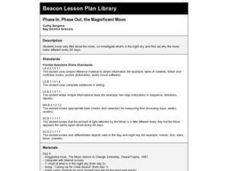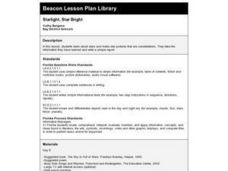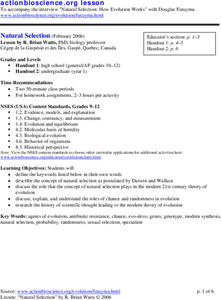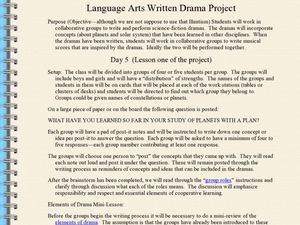Curated OER
The Sky Jeopardy
First graders reinforce concepts about sun, moon, day, night and sky by playing the Sky Jeopardy game. In the end, 1st graders get to nibble crackers in order to show the different phases of the moon.
Curated OER
Star Count
Fourth graders explore the night sky with their star counter. They to determine the types of stars and the number that can be seen from their local area and share their data via the Internet. They participate in NASA online projects.
Curated OER
View of a Comet from Earth
Students investigate comets. In this space science lesson, students study overhead transparencies of the orbits of Earth and a comet. Students identify various locations and times where comets would be visible from Earth.
Curated OER
Aquatic Organisms
Pupils create a poster describing the five characteristics of a salt water organism compared to a fresh water organism.
Curated OER
Looking into Space
Young scholars explore how telescopes work, build a model of their own, and consider how real telescopes can be used to ask-and help answer-questions about the universe.
Curated OER
Up in the Sky
First graders associate events and objects with day or night. They create a word bank and use is as a reference to create sentences about the sun. They conduct sun-themed experiments and art projects.
Curated OER
Phase In, Phase Out, the Magnificent Moon
First graders discuss why the moon appears to change shape. They use flashlights and balls to simulate the sun's light shining on the moon during its different phases. They read books, paint pictures and write sentences about the moon.
Curated OER
Starlight, Star Bright
First graders read books and use the Internet to identify several constellations and stars in the night sky. They make star pictures and write a class report about the night sky including a title, complete sentences and a cited reference.
Curated OER
Natural Selection
Students use discussion questions, handout information and research topics to explore several issues related to natural selection and evolution. They examine Darwin's research on the finch and antibiotic resistance.
Curated OER
Understanding Cause and Effect using A Sound of Thunder
Students listen to a short story, A Sound of Thunder, and retell parts of the story which is about time travel. They respond to the story by writing cause/effect outcomes about the ecosystem using a handout.
Curated OER
Language Arts Written Drama Project: Creationism
High schoolers create and perform science fiction drams based upon their knowledge of the solar system. For this solar system lesson students work in cooperative groups to create a short play and will also score the play.
Curated OER
Looking into Space
Young scholars explain how telescopes work and how they can contribute to our knowledge of the universe.
Curated OER
SEEDS WE EAT
Students identify seeds humans eat and do not eat. Students make seed collections, using common kitchen foods. Students display seeds from the foods they serve and discuss them with their guests. Students complete activities which...
NASA
Dawn Mission: Dawn Classrooms: Dwarf Planets
Students learn about dwarf planet classification through a researched-based instructional strategy called direct vocabulary instruction. Teacher guide and student activity sheet are included.
ClassFlow
Class Flow: Synonyms and Antonyms
[Free Registration/Login Required] The flipchart follows the Learning Focused format. It begins with an exciting Bingo-style interactive activator, then moves to teacher-directed instruction, guided practice, interactive games,...
ClassFlow
Class Flow: Is That a Fact?
[Free Registration/Login Required] In this flipchart, students will be introduced to concept of fact and opinion. It also contains an activating activity, teacher-directed instruction, key vocabulary, guided practice, independent...















